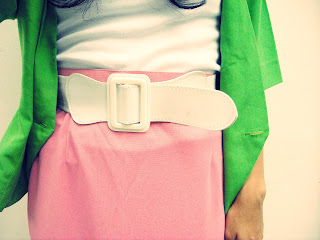Hello fellas. Glad to meet you again. Howdy? Hopely you're still come off stylish. Yay! Anyway, this week i'd love eat candy too much. I don't know why , but candy's can being my moodboosters. And this time, i will give you review some history's of my favorite candy's. LOLLIPOP! Girls around the worlds love lollipop much. How about you?
Lollipops are available in a number of colors and flavors,
particularly fruit flavors. With numerous companies producing lollipops,
the candy now comes in dozens of flavors and many different shapes.
They range from small ones which can be bought by the hundred and are
often given away for free at banks, barbershops, etc., to very large ones made out of candy canes twisted into a circle.
Most lollipops are eaten at room temperature, but "ice lollipops" or "ice lollies" are frozen water-based lollipops. Similar confections on a stick made of ice cream, often with a flavored coating, are usually not called by this name.
Some lollipops contain fillings, such as bubble gum or soft candy. Some novelty lollipops have more unusual items, such as mealworm larvae, embedded in the candy. Other novelty lollipops have non-edible centers, such a flashing light, embedded within the candy; there is also a trend of lollipops with sticks attached to a motorized device that makes the entire lollipop spin around in one's mouth.
In the Nordic countries, Germany, and the Netherlands, some lollipops are flavored with salmiak.
The History told ...
In the 17th Century, as sugar became
more plentiful, the English enjoyed boiled sugar candy treats and inserted
sticks into them to make them easier to eat, too. Linguists say the term ‘lolly
pop’ literally means ‘tongue slap’ (which we find hilarious) since the word for
‘tongue’ is ‘lolly’ in Northern England and ‘pop’ means ‘slap.’ London street
vendors may have coined this term as they peddled the treat, which was soft
rather than hard, but still considered a possible forerunner to the modern
lollipop.
If the 17th Century English version doesn’t count as the first modern lollipop,
you could look to the Civil War era for another early forerunner, when hard
candy was put on the tips of pencils for children. The early 20th Century was
the era of automation, which is when the birth of the lollipop as we now know
it begins in earnest, but there are still discrepancies as to who is the true
creator.
As early as 1905, the owner of the McAviney Candy Company may have stumbled
upon the lollipop by accident. The company made boiled hard candies that were
stirred with a stick, and at day's end, the owner brought the sticks covered
with the candy home for his kids to enjoy. It wasn't until 1908 that he began
to market these "used candy sticks."
Also in 1908, in Racine, Wisconsin, the first automated lollipop production was
brought about by the Racine Confectionary Machine Company that introduced a
machine that put hard candy on the end of a stick at the rate of 2,400 sticks
per hour. Owners of the company believed that they could produce enough
lollipops (although they weren’t called that yet) in a single week to supply
the nation's demand for an entire year.
In approximately 1912, Russian immigrant Samuel Born invented a machine that
inserted sticks into candy. The machine was called the Born Sucker Machine and
the City of San Francisco considered it so innovative that they awarded him the
keys to the city in 1916. George Smith, owner of a confectionary company called
the Bradley Smith Company, took credit for inventing the modern version of the
lollipop which he began making in 1908, and in 1931, he trademarked the term
‘lollipop,” borrowing the name from a famous race horse named Lolly Pop, which
is when the term lollipop finally connects back to the 17th Century phrase
(‘tongue slap,’ remember?).
As you can see, the development of the lollipop took its time and there is some
competition for the title “creator of the lollipop,” but regardless who gets
credit for it, it’s here to stay and it’s currently one of the most popular
candies in existence. Modern companies such as the Spangler Candy Company (creator of Dum Dums, Saf-T-Pops, and other favorites) can produce up
to 3,000,000 per day, which still hardly satisfies the nation's sweet tooth.
Lollipops today come in all shapes and sizes, and offer more than 100 varieties. Whether you
want a Charms Lollipop, a Tootsie Pop, or a lollipop with a cricket inside, our selection is
second to none. So go ahead and order yourself and your loved ones a ‘tongue
slap,’ and then enlighten them with all of your new knowledge; they’ll be so
impressed. Finally, if we may end our History of the Lollipop with a lesson:
when you don’t know what else to do, put a stick in it.

































